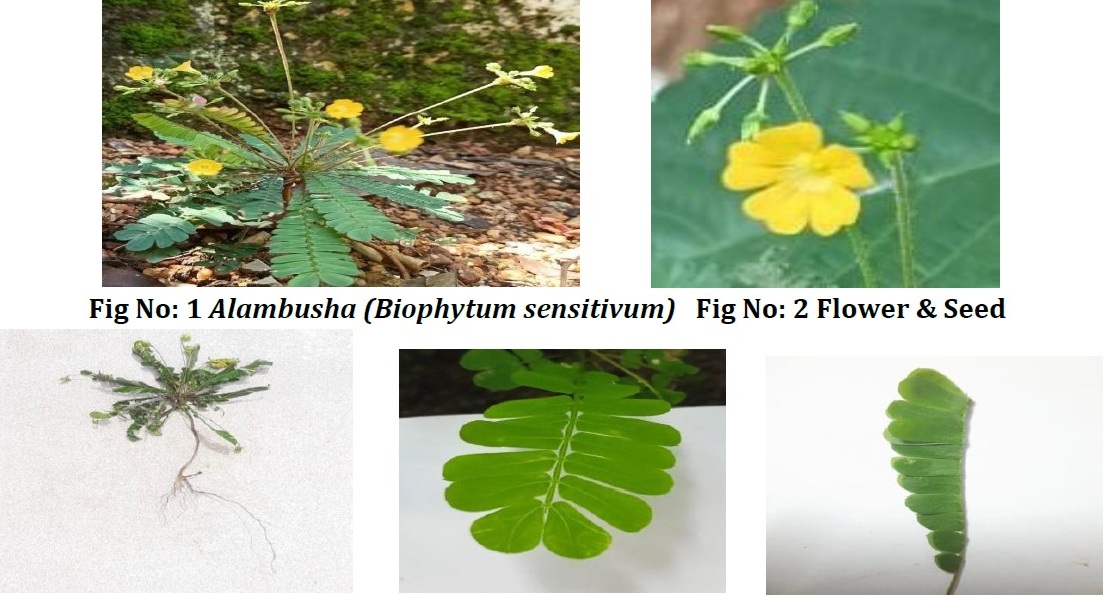A Critical Review On Alambusha ( Biophytum Sensitivum Linn)
DOI:
https://doi.org/10.47070/ijapr.v10iSuppl2.2552Keywords:
Alambusha, Biophytum sensitivum, Krimighna.Abstract
Alambusha (Biophytum sensitivum) belonging to the family oxalidaceae, commonly known as Mukkutti, is mostly found in marshy regions of south India, abundantly seen during rainy season. It is known as the “Small Tree Plant” with sensitive leaflets and bright yellow circular small flowers resembles like a tree in its texture and looks. The phytochemistry of B.sensitivum showed a wide range of chemical compounds, such as, two biflavones, three flavonoids and two acids. The plant is described in Ayurvedic classics, by Nighantu Acharyas, as Krimighna herb. The plant, is traditionally believed to exhibit antioxidants, anti-inflammatory and anti-tumor activity, radioprotection, immune-modulation, antibacterial, wound-healing, hypoglycemic actions. B.sensitivum has been used as traditional medicine for several purposes such as expectorant, stimulant, and tonic. It is recommended to be used in the treatment of stomach ache, asthma, treating insomnia, convulsions, cramps, chest complaints, inflammations, wound infections, tumors, and remedying chronic skin diseases. In the present review, all the available sources regarding the plant B. sensitivum was highlighted in a bird eye view
Downloads



